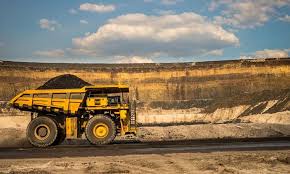
Coal power’s high price tag isn’t stopping it from hanging on longer than expected as rising electricity demand and slower-than-hoped deployment of cheaper alternatives create an extended “sunset” for the world’s dirtiest fuel, Wood Mackenzie warned in a recent report.

The global research firm’s latest analysis finds that a slowdown in new gas, solar and storage capacity could keep older coal plants running for decades — displacing as much as 2,100 GW of cleaner generation worldwide by 2050.
In its high demand scenario, coal-fired generation peaks in 2030, four years later than the report’s base case. The pushback has significant implications for climate targets that aim to phase out coal entirely.
“While the long-term trajectory towards renewables remains intact, the path is proving far more complex than many anticipated as countries grapple with energy security and affordability concerns,” said Anthony Knutson, global head of thermal coal markets at Wood Mackenzie.
In the U.S., coal is already economically uncompetitive: WoodMac puts the future cost of coal power at around $230/MWh in 2030 — more than double the cost of new gas at about $100/MWh, and far above hybrid solar plus storage, which should average $80/MWh.
Yet stubborn barriers remain. New gas plant construction costs in the U.S. have nearly doubled, long-duration energy storage is not yet ready to deliver consistent “baseload” reliability, and many utilities face steep replacement costs for aging coal fleets.
As Knutson noted, the tension between national security and price is playing out most visibly in Asia, where coal remains relatively cheap and energy independence drives governments to keep plants online. WoodMac estimates the levelized cost of coal in Asia and the Pacific will stay under $100/MWh by 2030 — still cheaper than gas in the region. Hybrid solar plus storage is the lowest-cost option in all regions, but grid integration and dispatchability remain challenges.

David Brown, Wood Mackenzie’s Director of Energy Transition Practice, framed the findings not as a forecast but as a stark cautionary tale: “Without urgent actions, the world faces a growing risk of drifting towards a 3°C pathway,” Brown said. “Our high coal demand case is … a reminder of what can still be prevented.”
The analysis warns that if the world fails to invest heavily in carbon capture, storage, and retrofits that help coal plants co-fire with alternative fuels like hydrogen or ammonia, carbon emissions from unabated coal could spike by 2 billion tonnes, threatening already fragile global efforts to limit warming to 2°C.
Renowned climate scientist James Hansen, who famously testified about climate change to Congress in 1988, recently declared the world’s goal of staying under 2°C “dead.” WoodMac’s report echoes that concern, highlighting that only substantial investment in new technology and grid-scale solutions will stop coal’s lingering impact.
While China has made some progress — retrofitting about 15% of its coal fleet to better follow load swings — other regions are lagging. Co-firing and carbon capture remain in their infancy globally, with the U.S. hosting just one operational large-scale carbon capture project in Texas and the fate of another major project in North Dakota now uncertain after its lead contractor withdrew.
WoodMac’s researchers caution that the future of coal will also depend on whether private equity, sovereign wealth funds, or alternative financiers step in to bankroll new mines and retrofit aging plants — as many Western banks continue pulling back from coal lending.
Combined with rising capacity prices — which spiked tenfold in parts of the PJM Interconnection last year — the costs and politics of coal’s decline look far more complicated than just letting aging plants fade away.
In the end, WoodMac’s message is clear: without serious investment in grid modernization, storage, alternative fuels, and carbon capture, coal’s costly footprint will linger long past its economic prime.
Originally reported by Brian Martucci in Construction Dive.